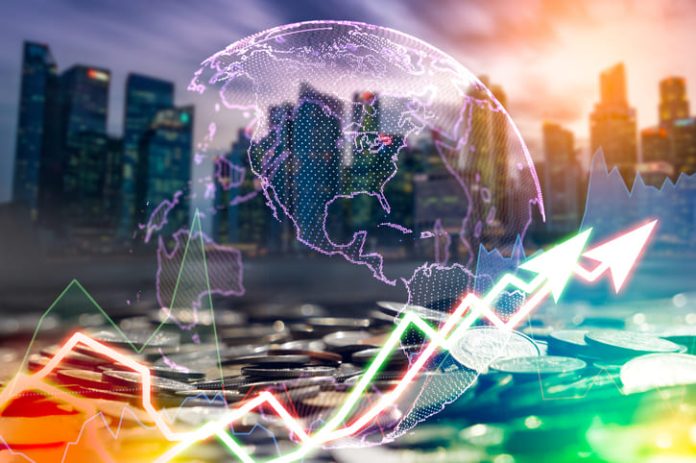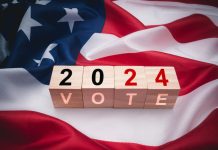By Tim Bovy
Catastrophic events often create the context for new economic models. President Franklin D. Roosevelt developed the New Deal in the 1930s in response to the Great Depression. World War Two led to the creation of the social market economy in Germany, which was launched under the chancellorship of Konrad Adenauer in 1949. The cumulative impact of the 2008 financial crisis, the coronavirus pandemic, and the cataclysmic potential of climate change has spurred the development of Bidenomics, reviving, at least in part, aspects of both the New Deal and the social market economy.
The financial collapse alone could have brought about a similar shift in economic policy. However, there is a good reason that it did not: the US government was committed to neoliberalism, which formed an unbroken dominance in the US from the 1970s to the early 2020s, including during the presidency of Barack Obama. His administration’s economic policies expanded the ever-widening income gap, under the stewardship of Timothy Geitner and Larry Summers, two fellow neoliberals. As Adam Tooze observed, of the “growth generated by the economic recovery since 2009, 95% was monopolized by the top 1%. They saw their incomes rebound by 31.4%. Meanwhile, 99% had seen virtually no gain in income since the crisis.”1
Bidenomics aims to fix income inequality, among other social inequities, as it moves away from neoliberalism towards something more akin to a social market economy. President Biden himself has said: “Milton Friedman isn’t running the show anymore,”2 mirroring the World Economic Forum’s declaration that the Friedmanite model is no longer sustainable. As Klaus Schwab noted in 2019, in arguing for a better kind of capitalism: Greta Thunberg “has reminded us that adherence to the current economic system represents a betrayal of future generations, owing to its environmental unsustainability.”3
These observations come from inside and from outside of politics and touch upon the two most pressing problems facing mankind today for which we need a long-term solution: the interlinked issues of inequality and climate change. I say “mankind” because the problems are global. The solution for developing an economic model to serve the needs of the 21st century must, therefore, also be global to offset Neoliberalism’s worldwide impact, which is the underlying cause of both. Part 1 of my article examines where we are now. Part 2 looks at where we need to go and how we might get there.
The Friedmanite Model
What exactly is the Friedmanite model, which underpins neoliberal thinking? One of its main policy tenets calls for minimum government intervention since it maintains that markets are self-regulating. This core doctrine, however, is misleading. If we have any doubts about this, we need only return to the period of the financial collapse when, after 2008, the US privatized profits and socialized losses. The elite benefited from the financial collapse because the government coddled them in a protective blanket of socialism, or what the head of China’s sovereign wealth fund described in December 2008 as “socialism with American characteristics.”4 If we are skeptical about the remark because of its source, we should remember that “the US Treasury was accused by the German finance minister of interventionist tendencies akin to communism.”5 The battle cry of the 1% for minimum regulation when they were garnering huge returns on capital quickly mutated into a plea for maximum government intervention to save their wealth when the financial rigging came crashing down. Socialism turned out to be neoliberalism’s safety net.
There was, however, no rescue plan for the 99%, who formed the core of the Occupy Movement in 2011. Bidenomics has given them a voice. If Geitner and Summers were the facilitators of Obama’s neoliberal economic agenda, Jared Bernstein and Heather Boushey are two of Biden’s spokespersons for an economic model that represents a betrayed middle class, which stood on the sidelines watching, as governments “bailed out financial institutions, then recovered the costs by hacking away at public services, effectively punishing laborers and taxpayers for the sins of wealthy bankers.”6
Although many of us may have not realized it at the time, “2008 revealed that since 1976 national economic policy had been subordinated to a cluster of transnational banks,”7 which played into the neoliberal model of an economic system in which the markets were disembedded from society. Of course, it was not always thus. Franklin Delano Roosevelt said: “We are going to make a country in which no one is left out.”8 The New Deal was not perfect, nor was the New Deal Coalition but, with all of their flaws, they attempted to alleviate poverty, reduce income inequality, and promote social justice as precursors of what President Biden is trying to achieve now.
By the 1970s, the New Deal Coalition had collapsed, and in its place arose neoliberalism which gradually eroded the stability of the middle class and cautioned businesses to stop being wimps. Writing in The New York Times in September 1970, Milton Friedman criticized businessmen who thought that business must promote “desirable ‘social’ ends; that business [must have] a ‘social conscience’ and [must take] seriously its responsibilities for providing employment, eliminating discrimination, avoiding pollution and whatever else may be the catchwords of the contemporary crop of reformers.”9
What appealed to Friedman is that markets do not have a conscience, and are free from the constraints of the interdependent relationships that define society. Neoliberalism buried society so far beneath the market that Margaret Thatcher declared the former non-existent: “There’s no such thing as society. There are individual men and women and there are families.”10 As Tony Judt observed, in such a political milieu, “the role of the state is reduced…to that of a facilitator. The task of the politician is to ascertain what is best for the individual, and then afford him the conditions in which to pursue it with minimal interference.”11 It is important not to miss the irony here. Creating the fertile economic conditions necessary for the top 1% to flourish required deliberate state action. “Laissez-faire,” as Karl Polanyi wrote in the 1940s, savoring the oxymoron, “was planned.”12
The Need for a Global Solution
Bidenomics middle-out, bottom-up economic model seeks to counterbalance social and economic inequality with social and economic justice. The problem, however, is that no matter how noble the underlying moral and ethical sentiment, the model is local, in the same way that Germany’s social market economy in mid-twentieth century Europe was local, whereas the problems of inequality and climate change are global. If we are going to move towards an economic model that serves the needs of the 21st Century by offsetting the damage that neoliberalism has done, we need to reimagine capitalism in a way that benefits everyone, including nature.
Part 2 of my article explores how we might get there.
About the Author

Tim Bovy has over 35 years of experience in designing and implementing various types of information and risk management systems for major law firms such as Clifford Chance; and for international accountancy firms such as Deloitte. He has also developed solutions for organisations such as BT, Imperial Tobacco, Rio Tinto, the Kuwaiti government, The Royal Household, and the US House of Representatives. Tim is an elected member of The Royal Institute of International Affairs, Chatham House, an Independent Think Tank based in Central London, and holds a BA degree, magna cum laude, from the University of Notre Dame, and MA and C.Phil degrees from the University of California, Davis.




































































